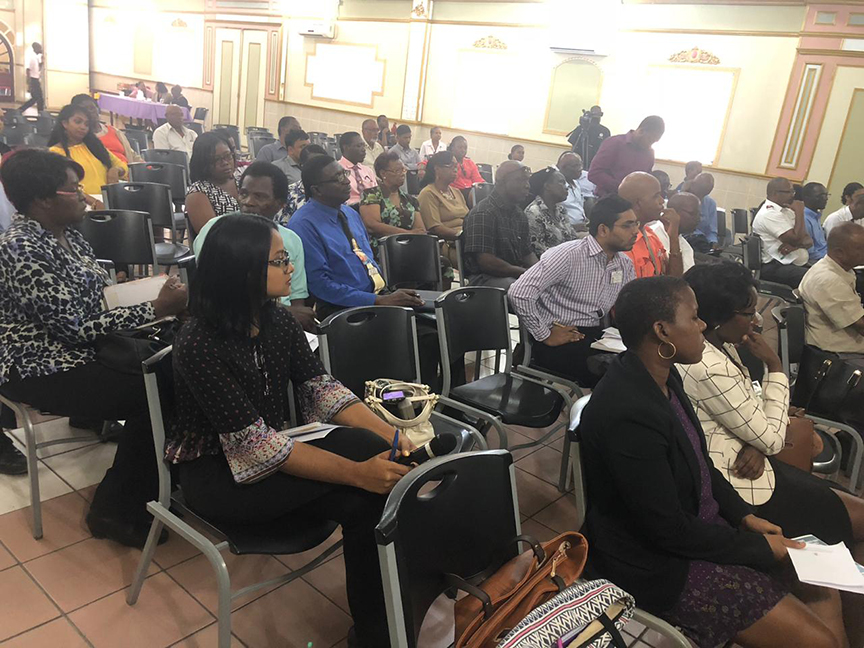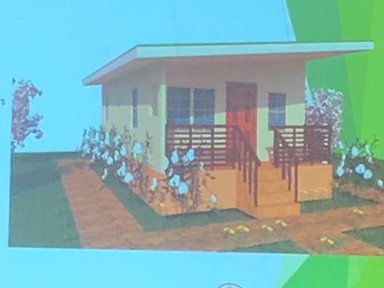Under a five-year Central Housing and Planning Authority (CH&PA) initiative, approximately 2,500 poor families are expected to receive housing assistance, which will include the construction of core homes that will be allocated for free to 250 of the most vulnerable.
Infrastructural works are also expected to be done in core housing schemes under the CH&PA’s US$30 million Adequate and Urban Accessibility Programme, which is being funded by the Inter-American Development Bank (IDB).
At a Stakeholders’ Sensitisation event for the programme, held at the Regency Suites in Georgetown, Chief Executive Officer of the CH&PA Lelon Saul told representatives of communities and Neighbourhood Democratic Councils (NDCs) from across the country that the initiative will target low-income families as well as communities such as Sophia and Cummings Park, Diamond-Grove, and La Parfaite Harmonie.

“There are three major components of the programme. We have affordable and sustainable housing, consolidation of existing housing schemes and implementation support and institutional strengthening,” Saul said.
In addition to the communities and families benefitting from the programme, local democratic organs are also expected to be able to increase their capacity as training will be provided, with a focus on community services and climate adaptation measures.
Recognising that lower-income earners are often overlooked, Saul said the government, through the CH&PA, would provide housing solutions that are affordable to 2,500 citizens through five-year life of the project.
Out of those 2,500 persons, 250 of them will benefit from the construction of core houses, while the remaining will benefit from home improvement subsidies. “Basically, we are going to be build these houses and they are going to be given free to deserving families. The other 2,000 subsidies basically will be home improvement subsidies and deserving families will apply, and once people are satisfied with the criteria, home improvement subsidies will be granted,” Saul explained, while stating that this component of the programme would cost US$10 million.
“As you are aware, over the years the CH&PA has embraced the concept of incremental development. This practice is now in keeping with the principles of adequate housing [and] many of our housing areas have poor infrastructure and services. The CH&PA is committed to satisfying the requirements, hence, several areas will benefit from improved infrastructure, such as asphaltic roads, concrete drains and we will start with the Sophia-Cummings Lodge area. Those east to west drains will be upgraded along with street lights and multipurpose community facilities,” he added, while noting that some US$16 million would be spent under this component.
There is stringent criteria to qualify for assistance under the programme.
Community Develop-ment Director of the CH&PA Gladwin Charles emphasised that vulnerable households, including those living in homes that have been deemed as uninhabitable, would be targeted. Focus will also be placed on squatting areas but persons must conform to the required criteria.
Charles explained that applicants for the core homes must be Guyana citizens, at least 18 years old and working for less than $75,000 per month. The applicant must also be the owner of a house lot and must have completed all payments. The applicant also has to demonstrate that they are currently living in a home or area that is at-risk or deemed uninhabitable.
“The CH&PA will provide materials and labour to construct the unit and once selected the applicant must contribute $100,000,” he said.
The core homes will have basic bath, living room and bedroom spaces but no dining room. They are expected to cost less than $4 million.
The successful applicant will be provided with a building plan but must seek approval for it as well as pay for the associated costs.
The home improvement section of the programme will also target low-income households, especially single parents and women.
The selected beneficiary will be provided with $500,000 but improvement would be limited to roofs, walls, floors, expansion to address overcrowding, sanitation improvement, rain water harvesting and any repairs and construction necessary for people with disabilities. The funding will not cover any new construction.
Questions from stakeholders mostly surrounded the elimination of squatting and whether those persons would be given priority for the core homes. In response, Saul explained that while the CH&PA is currently developing a strategy on squatting, the programme will consider squatters but only those persons who are the legitimate owners of land, and fall in line with the criteria will be considered under the programme.





